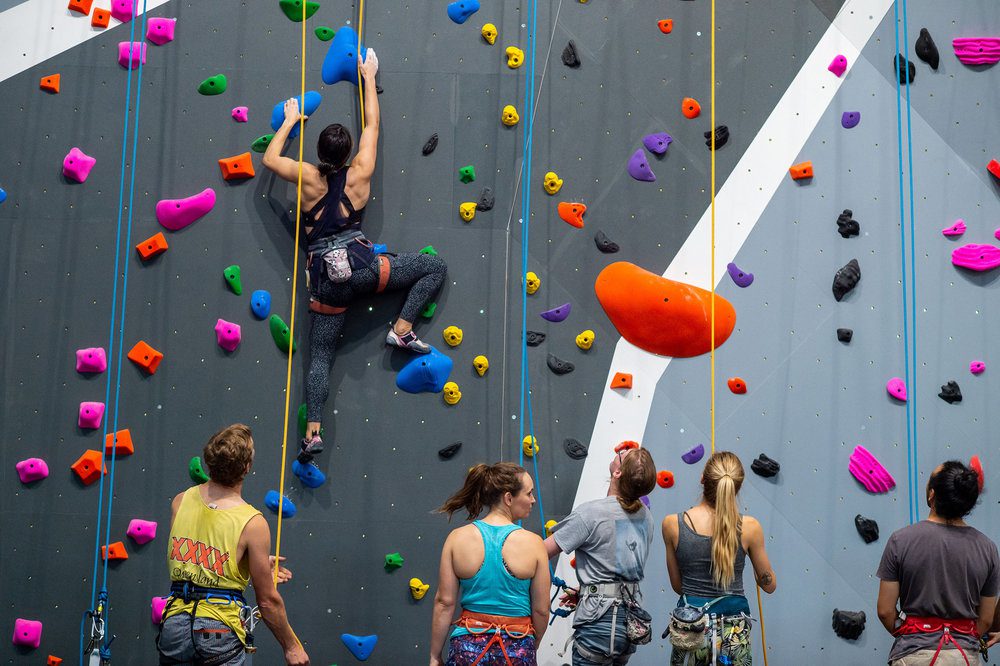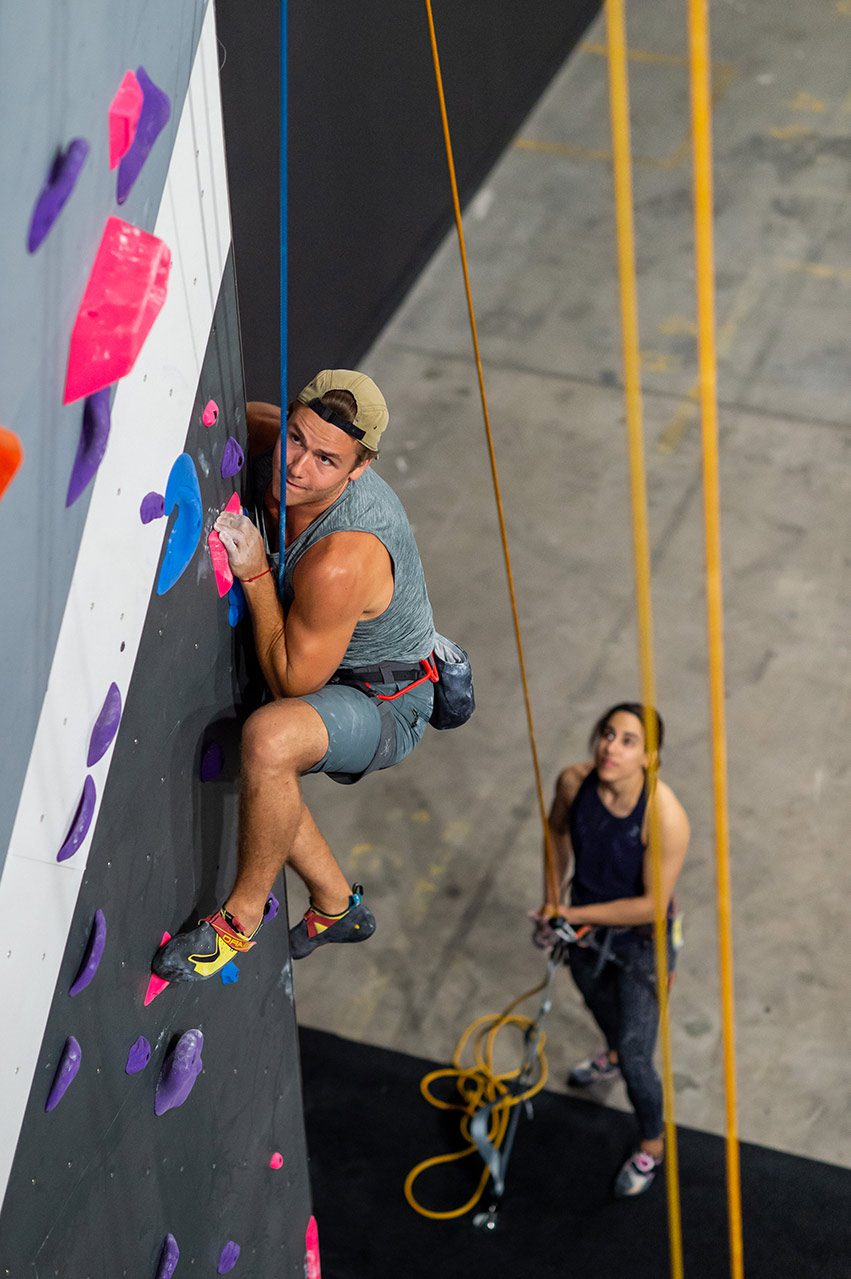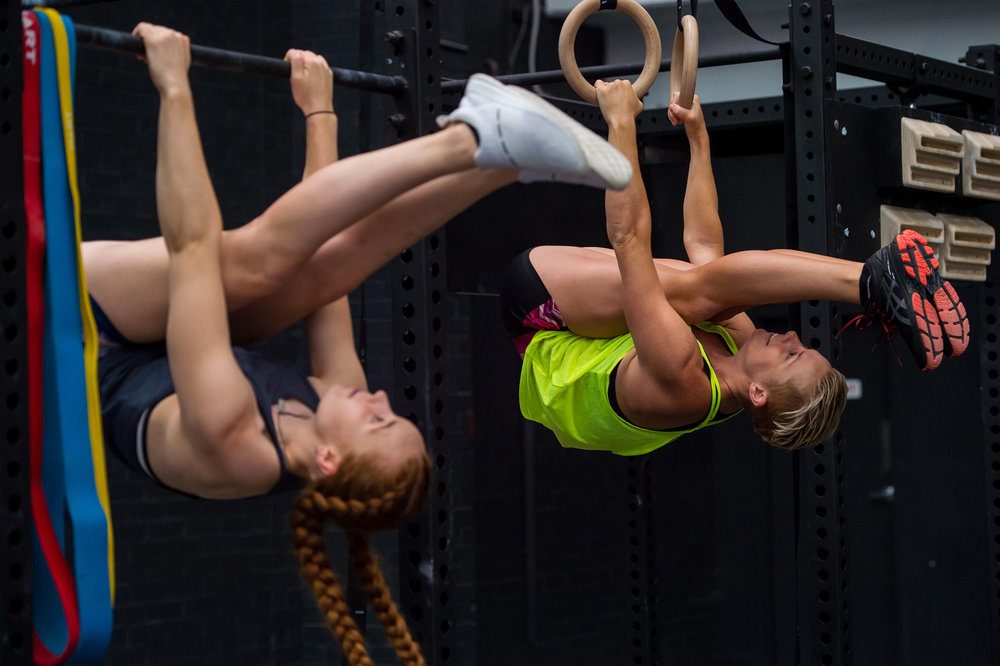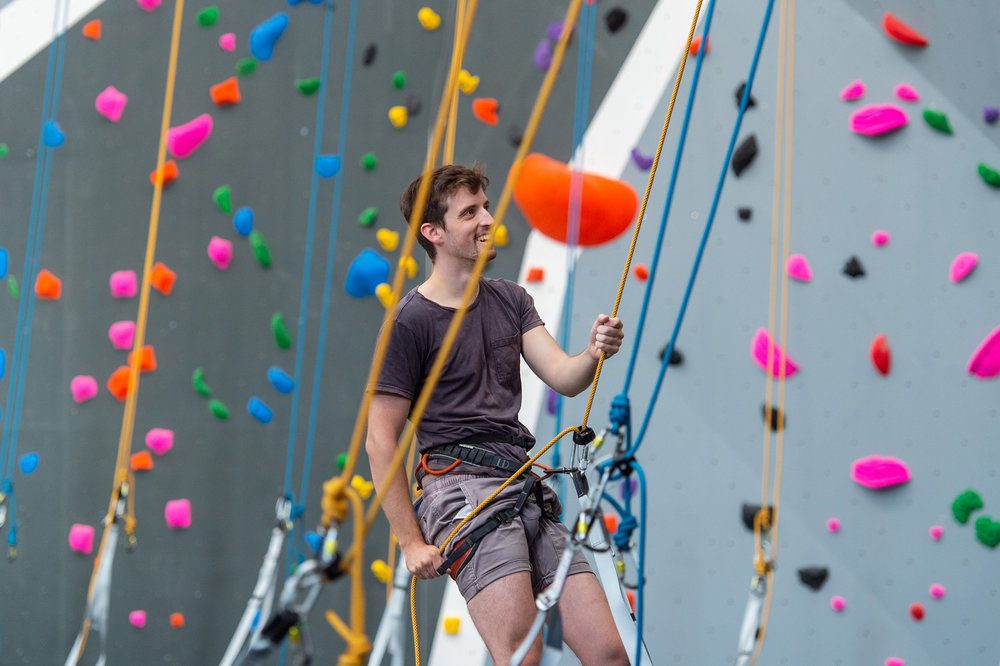Rock climbing is becoming increasingly popular. Step out onto practically any craggy landscape, and you'll find swarms of people, rope in hand, making their way up scary-looking rock faces.
People are getting into rock climbing for all kinds of reasons. One of the significant drivers is functional strength. People who climb rocks tend to develop massive forearms, and calisthenic agility with the sort of size that you can't build in the gym. It's impressive.
People also love it for the thrill and sense of achievement. Few things feel better than scaling a 1,000-foot cliff, knowing you got up it using nothing more than your strength and guile.
If your friends are making noises about wanting to learn how to rock climb, how do you teach them? In this article, we're going to take a deep-dive into some of the methods that you can use and, with a bit of luck, put a smile on their face.

Rock climbing is a dangerous sport. You are, after all, making your way up the side of a cliff - something that people would tell you not to go anywhere near if you weren't climbing up it.
It's best, therefore, to take baby steps. You want to ease your friends into it and give them somewhere predictable and safe to practice their skills. You don't want them climbing cliffs without any previous experience.
The great thing about indoor climbing walls is that they are exceptionally safe. Unlike natural rock faces, there's nothing unpredictable about them. Nothing is going to come loose from above or below, and the variable errors that can occur are dramatically reduced. It is, therefore, the ideal place for people to build up experience, gain confidence, and learn the kinds of skills that they will need on the mountain.
There are, of course, no substitutes for getting out there and interacting with a real rock face in nature. Nothing can quite prepare you for the challenge of that, except going out and attempting it. Some people can be so strong and climbing hard grades in the gym, but unless you get outside regularly, the grades you climb won't necessarily correlate across.
You can, however, introduce your friends to the concept of climb rating scales, something that indoor rock climbing and bouldering gyms use to let people know how hard a particular climb is.

Gyms grade the difficulty of climbs based on the moves that they expect you to do. A climb which requires you to make a flying leap halfway up is much more complicated than one where there are places on the rock to support three of your limbs at all times. Indoor climbing scales can typically use an "in-house" more simplified method, as it's inconsistent with relating scales to outdoor climbing directly.
Many factors make up the difficulty of a climb. The size of the holds, the distance between the holds, the length of the climb and even exposure or location of the route.
There are different grading systems used around the world. In the USA (YDS system), all climbs start with "5", and the rising number determines the specific level of difficulty. You'll find easy climbs rated between 5.0 and 5.7, moderate climbs between 5.8 and 5.10, and difficult between 5.11 and 5.13. Anything above that is extreme.
Australia uses the Ewbank system, which is more straightforward to read. All climbs are graded by the first ascensionist ranging from the most straightforward 1 (ideally a flat piece of ground you walk on), to the hardest 35. For a guide, 1-14 being easy, 15-22 moderate, 23-28 difficult, and 28+ extreme.
A grade is only an indicator of how hard a climb is. For instance, If you are a very short climber, some grades may seem much harder as you can't reach between the holds. Climb rating scales also include other information which tells you more about the nature of the climb, besides the difficulty.
Finally, the dangerousness of the climb is not taken into account when grading a climb as it can in some other countries grading systems. The UK, for example, has a separate grade of how dangerous the climb is. In Australia, these pieces of detail can usually be seen written in the guidebook telling of the severity of the climb.
Bouldering and rock climbing is a surprisingly physical activity. Holding onto a climbing wall and hauling yourself up while wearing a harness requires a lot of energy.
Before attempting any climbs, encourage your friends to warm up, paying particular attention to the hands, arms and shoulders. You'd be amazed and just how many novice climbers pull their tendons because they didn't warm up correctly.

Here are some techniques that you can use:
Flat fist. Get your friends to make a flat fist and press their fingers against the palms of their hands.
Full fist. Get your friends to make a full fist. Again, ask them to squeeze their hands, release, and then squeeze again.
Hooked fingers. To perform hooked fingers, start with the hand outstretch and flat. Then bring the tips of the fingers down towards the palm, without bending them at the joint which connects to the palm. Do this several times.
By the end of the warmup, your hands should feel loose and ready to take on the rocks. If you are bouldering check out last month’s article on our 5 top tips for training
Like many outdoor sports, rock climbing is gear-dependent. You need the right gear to have fun, even at an indoor rock climbing gym. But what equipment do your friends need?
First and foremost, you'll need a harness. Many hobbyists buy their own harnesses, but you can rent these from Climbfit Kirrawee or Climb Fit St Leonards. The costs for adults are;
Entry $19.00
Entry + Harness $25.00
Entry + Harness + Shoes $28.00
Second, your friends need climbing shoes. Climbing shoes are a particular type of shoe, designed to provide grip and a durable toe edge while climbing rocks, while also offering exceptional feel and flexibility. Professional-grade shoes hug your feet tightly, turn down at the end, and increase the sensitivity of your feet to feedback from the rock. Ideally, you want your friends to be able to feel the rock beneath them so that they're not guessing where to put their foot next or how much grip they have.
Finally, you'll need to ensure that your friends are wearing the right clothing. Clothing that doesn't stretch is a big no-no. Jeans may be robust against abrasion, but are also tough to move in! Try to choose garments with four-way-stretch fabric. This type of material will allow your friends to move in any direction that they like, ensuring that they remain unimpeded on the climbing wall.
You can check out some shoes available in our pro Shop at Climb Fit Kirrawee in our previous article on bouldering for beginners
Rock climbing has a way of slapping down even the biggest egos in the sport. You can be an expert climber and still make mistakes that wipe you out. It's a challenging pursuit.
When introducing your friends to rock climbing, try to leave your ego at the door. The more that you can share the pure joy of climbing with them, the more your friends will engage with the activity and learn to love it. Climbing is a sport with a welcoming community!

Climbing skill isn't just something that you learn tacitly - there's a role for proper technique too. If your friends are new to rock climbing, your job is to introduce them to the correct method and help prevent them from getting into bad habits. As every good rock climber knows, feet placement is vital. Without the correct foot position, it's hard to progress beyond a fundamental level.
As someone with experience, you'll also want to show your friends how to shift their balance while on the climbing wall for maximum advantage and demonstrate that they can support a lot of their weight on one or two-finger holds. The more efficiently you can move your body and use your legs instead of arms, the longer you're going to last in a session!
Another great way to brush up your skills is to join one of Climb Fit's beginners, intermediate and advanced classes for Indoor rock climbing and Bouldering. These classes are a great way to not only improve your skills together, but they also offer an opportunity to meet new people and build your social-climbing group. After all, that's what it is all about!
Check out some of the upcoming classes here at Climbfit Kirrawee.